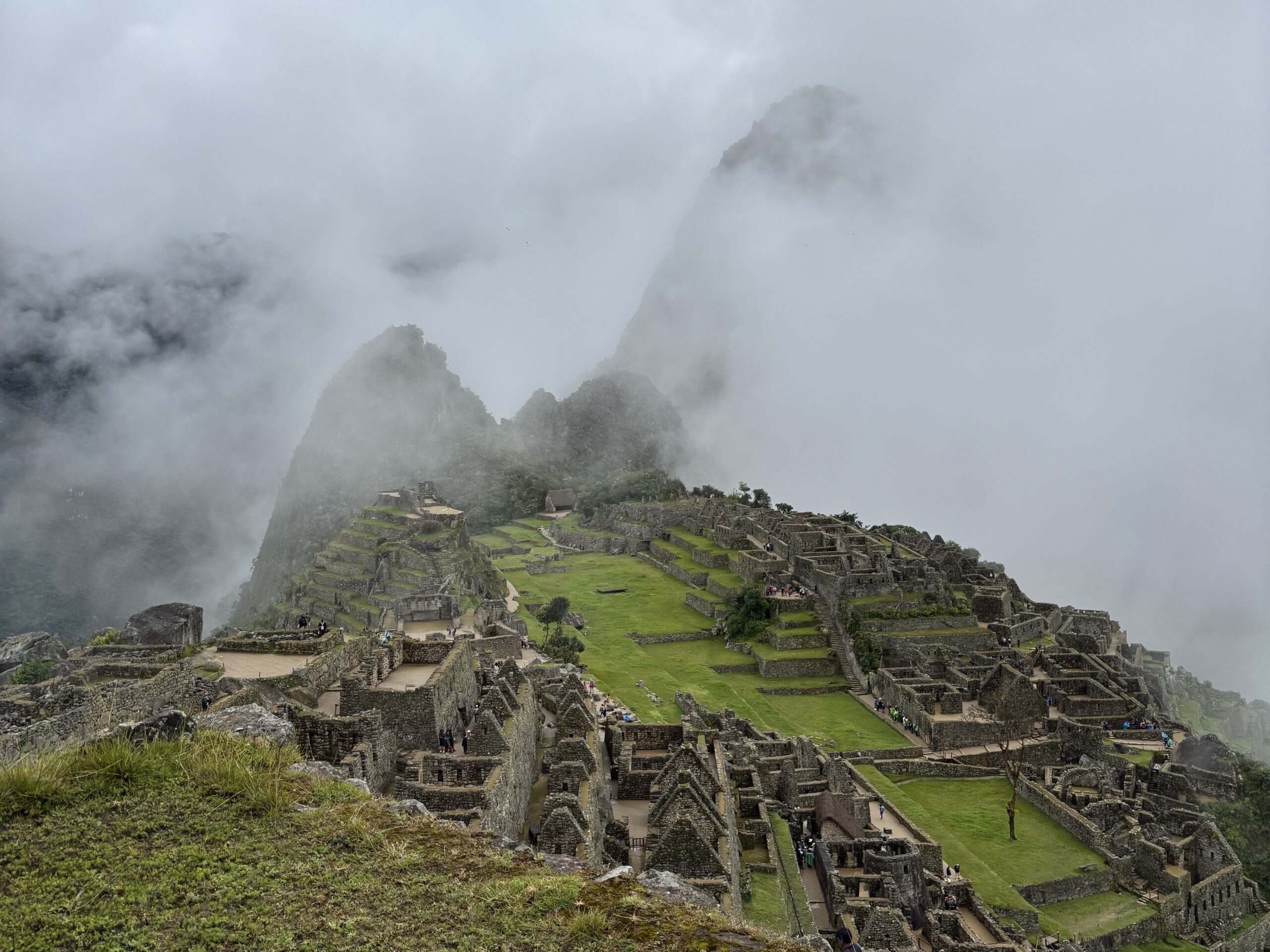
One of the Seven Wonders of the World: Machu Picchu, the city hidden in the mountains.
DAY 1: Start of the Salkantay Trek
I think it was 5 in the morning? Maybe earlier. No idea, really. All I know is my body wasn’t exactly thrilled about my brain’s decision to wake up. But that would become the theme of the next few days—so, time to get used to it. We got in the car knowing this was the last ride we’d have for a solid bit.�
Today marked the start of our journey to Machu Picchu. Not just some quick in-and-out, hop-on-the-train tourist route either. My mate and I figured: why not walk five days to it instead? Really earn it, you know? The Salkantay Trek is the brother of the famous Inca trail. This path deserves its stripes though, as it delivers thousands of people each year to Machu Picchu.�
Find reel on my Instagram: Duckoffandtravel.
After a bit of a nap during the drive, we were dropped off… on the side of a cliff. Solid start. For a bit of context, Peru is best visited in its dry season, from May through November. So naturally, we showed up during the wet season. Every day felt like a test of whether our raincoats—or shoes—would survive the next few hours.
Day one was light-ish: about 10 kilometers of the roughly 50–55 we’d cover over the next five days. We started high—around 3,600 meters—and climbed to roughly 4,200 to reach Laguna Humantay, a glacier-fed lake so blue it puts every Instagram filter to shame. But first, we had toearn that view.
Pacing was everything. You could feel it in the group—we all knew we had a big five days ahead. And though the first hike wasn’t the steepest we’d face, it was still a grind. The rain teased us on and off, just enough to keep things interesting. Our guide set the tempo. He’d done this route more times than I’ve hiked anywhere, so I just stuck to his rhythm and hoped my legs would follow.
When we finally reached the lake, though? Unreal. Just this surreal, glowing pool surrounded by jagged peaks—and we even caught a mini avalanche tumbling in the distance. Xavier (my mate) and I even walked out onto a ridge so narrow it made my post-travel-skinny arms look bulky, just to take it all in from above the lake and surrounding valley.
The day ended with high spirits, a legit nap in surprisingly comfy accom for what we paid, and a feast of a meal cooked by our trek chef—seriously, it tasted like royalty food. Tucked beneath a starlit mountain range, with the cold air settling in and a belly full of carbs, I was beyond ready for Day 2.
DAY 2: The Ups and Downs of a 22k day
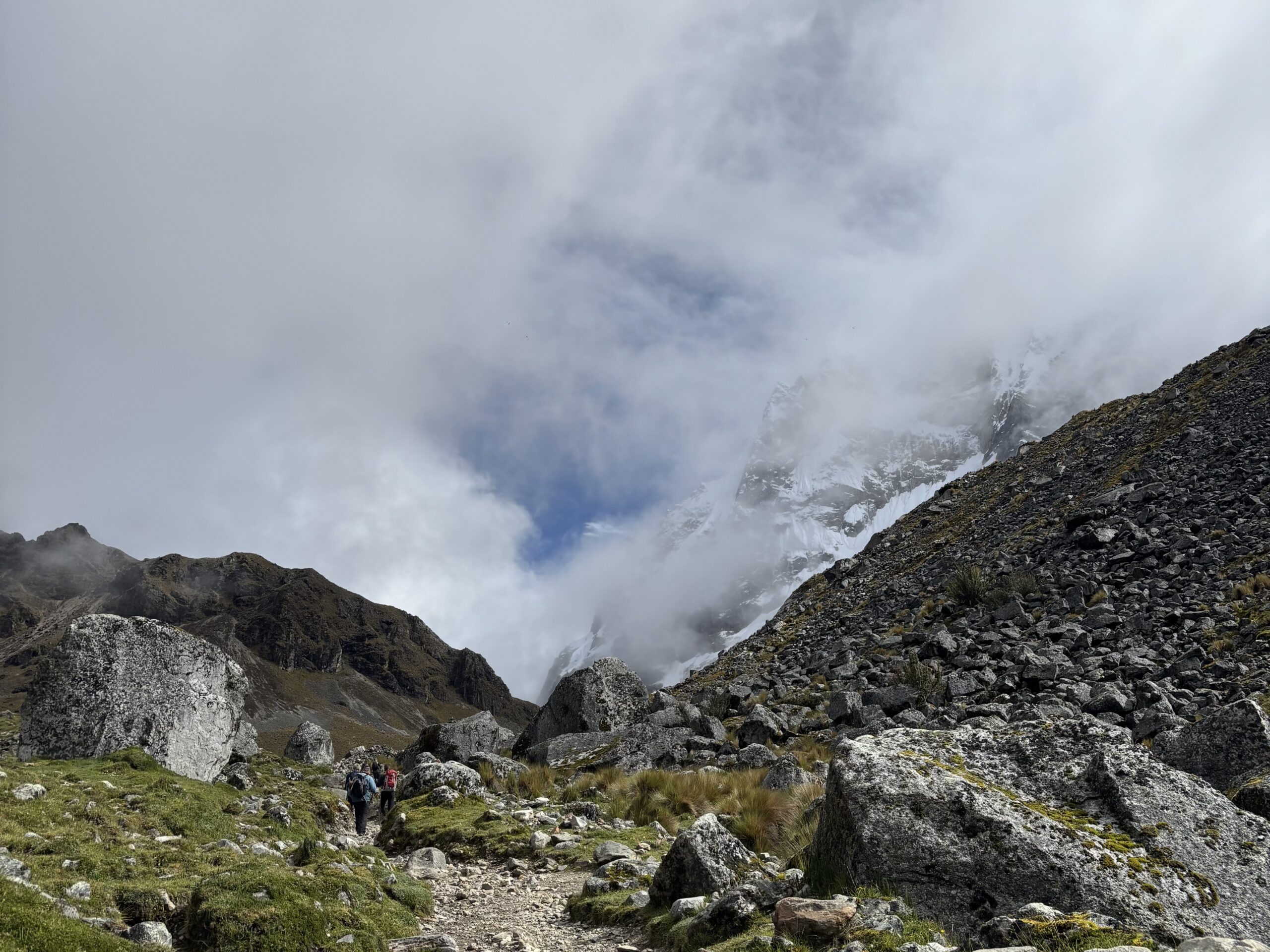
Approaching the top of the Salkantay Pass
It was cold. Like, proper “why did I sign up for this” cold. I remember waking up and wrapping my hands around a warm cup of cocoa tea—an Andean remedy that’s both comforting and a gentle kickstart for your 5 a.m. soul. We needed it. This was the big one: the toughest day of the trek, no question about it.
Today was 22 kilometers of walking, hitting our highest altitude of the entire trek—roughly 4,700 meters—at the Salkantay Pass. Then, just for fun, we’d spend the next six hours walkingdownhillto the next accom. Altogether, it ended up being our biggest physical day of the whole four months of travel, clocking in a ridiculous 41,000 steps.
Strangely enough, goingup to Salkantay wasn’t the worst part. Don’t get me wrong—it was no stroll through the park. But with a cheek full of cocoa leaves, you start to feel like a high-altitude superhero.The donkeys that consistently ran past proved to me I wasn’t shit but I liked my pace. Quick but still getting to enjoy the Andeans, packed with snow and boulders bigger than my head, I mean asteroids. It was the waydown that really took its toll.
The first section post-pass was actually decent. A little wet thanks to the fog clinging to everything, but the vibes were still good from not having to go up anymore. Then came lunch, another gourmet hit from our trek chef. Honestly, I don’t know how the guy cooked that well in the middle of nowhere, but I wasn’t asking questions.
With food in our bellies and the finish line of Day 2 almost in sight, we pushed on. But hey—it is the wet season. Wouldn’t be a real Peruvian hike without some torrential rain, right? Just as the clouds darkened, we ducked into shelter and watched the skies unleash an absolute downpour. Classic.
Thankfully, our guide held off moving us until it calmed down, which it did. Mostly. Only two hours to go now… through a path that had turned into a fresh mudslide graveyard. Entire hillsides looked like they’d peeled off just minutes before we got there, and honestly, it didn’t seem like they were done falling either. We picked up the pace a little after that, still somewhat admiring the craziness of this area. A path one minute, down the mountain the next.�
But all grueling days eventually end—and thank god this one did. My feet were already plotting their escape while I slept.
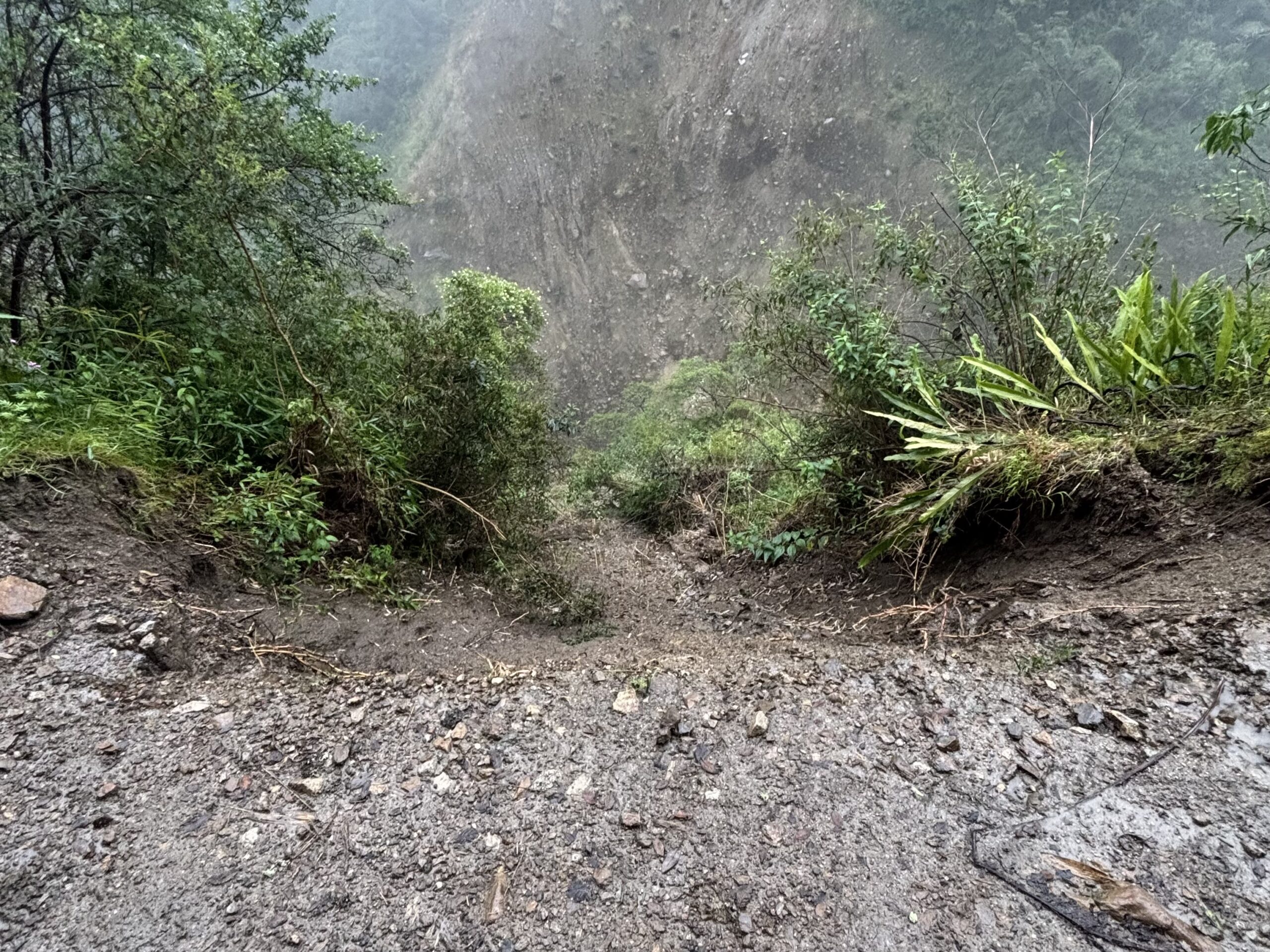
Post Rain mudslide, looks like something just took a bit out of the mountain.
DAY 3: The Mudslide Tightrope
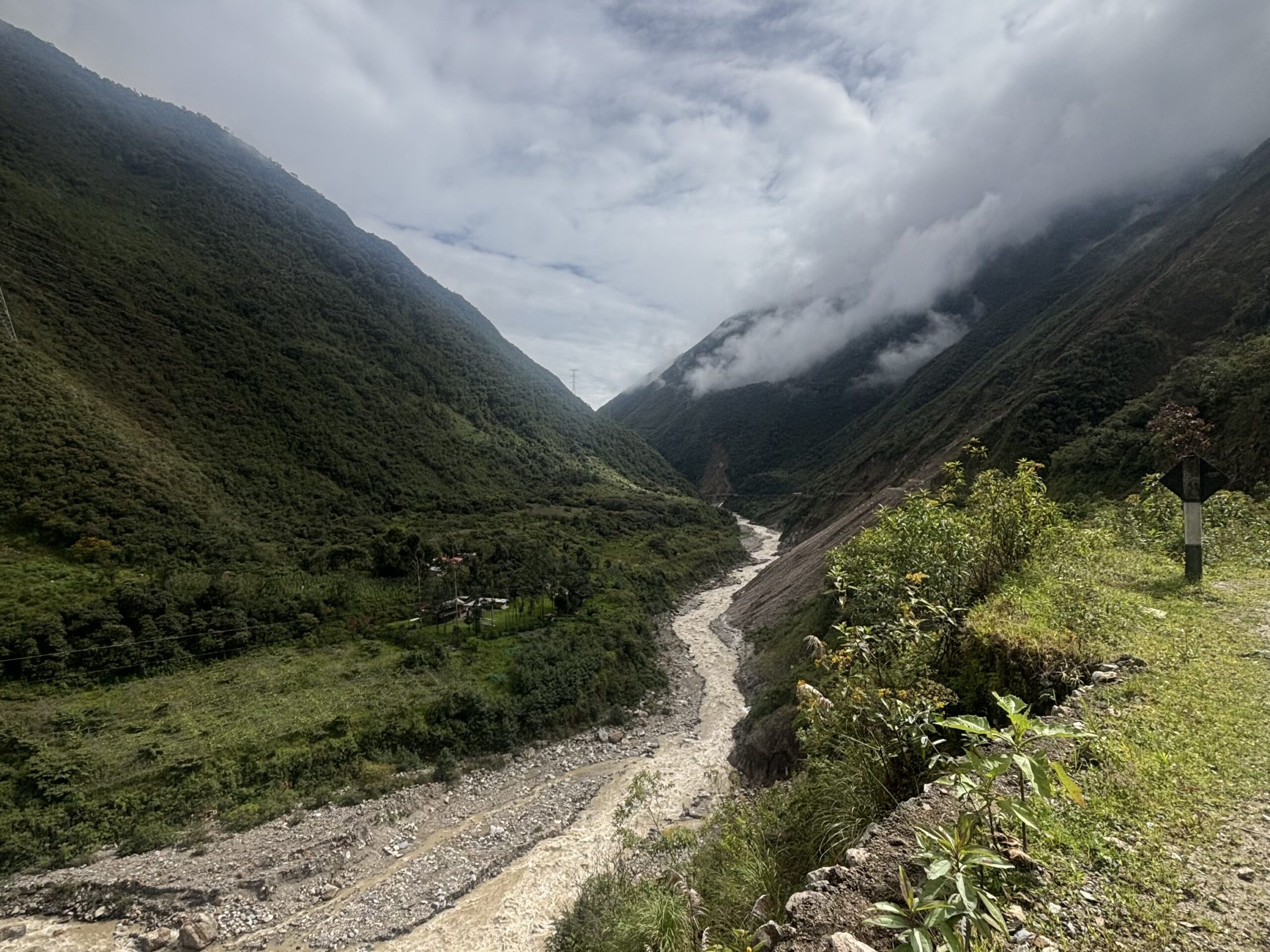
This was probably our easiest day. And yeah, I get that a 5-hour, 10-kilometre hike isn’t exactly your average Sunday stroll around the neighbourhood—but after Day 2? It felt like a damn holiday. The major drop in altitude didn’t hurt either. Even though we were still hovering between 2,700 to 3,000 metres, my lungs finally stopped screaming at me.
By this point, we’d officially entered a rainforest environment. Our guide explained that we were now approaching the edge of the Amazon Basin, slowly trading in rugged, snow-capped mountains for lush greenery and thick jungle air. The change in scenery was unreal. A wide river ran alongside us, carving through the towering valley walls. Every now and then it’d morph into aggressive rapids, the kind that definitely didn’t say “jump in.”
Somewhere along the way, our guide decided to bless us with a little Inca warrior energy, smearing berry juice across our faces like we were prepping for battle. Looked ridiculous, felt powerful. Other than stepping into a deceptively deep mud puddle that totally looked like a normal trail—10/10 camouflage—it was smooth hiking. Plus, no rain for the first time in days, so no complaints from me.
Now, that’s not to say it was all sunshine and jungle vibes. The catch for Day 3? Mudslides. A lot of them. Like yesterday, the rain had triggered landslides all over the region. Some were mild. Others, not so much. Crossing them felt like walking into a horror film, only this time you’re the one making bad decisions in real time.
Each step over these unstable piles of mud and loose rocks felt like a gamble. And you couldn’t just look down either—you had to constantly glance up for falling debris, in case a rogue rock decided your head looked like a landing pad. One section got so bad, we all stood and watched as a bulldozer literally carved a new path through the cliffside. Wild stuff.
Still, once we got through the sketchy parts, the rest of the walk was golden. Jungle sounds, that steady rumble of the river, and the kind of camaraderie that only shared mud trauma can create. And when we finally arrived at our campsite, the first cold beer in hand tasted like liquid gold.
Us in Awe watching the donkeys steam roll a fresh mudslide crossing.
DAY 4: The March to Aguas Caliente
The day before had tricked my body into a false sense of relaxation. I woke up thinking maybe we’d turned a corner, that the worst of the trek was behind us. Cue torrential downpour. Day 4 was chaos—jam-packed into four hours of uncomfortable, wet madness.
It all started with a car ride that I genuinely wish I could forget. Picture a five-seater with seven people wedged in like human Tetris. That’s all I’ll say about that.
After about 45 minutes of humid, bumpy regret, it was game time. Now, let me be clear—our trekking company had been fantastic up to this point. The food? Unreal. The guide? Legend. But they’d made one tiny, crucial mistake: they forgot to buy our Machu Picchu tickets.
Couple issues with that. First, you don’t want “Circuit 1”—that’s just a viewpoint. Circuit 2 is the one you want; it lets you actually explore the city itself. Second, ticket quantities are limited, and they usually sell out by 10 a.m.
So instead chill walk to Aguas Calientes –aka Machu Picchu Town–, we had to walk from a nearby stop—Hidroeléctrica—to the town… fast. It’s about 10 kilometres of railroad walking, and we were told we had to do it in under two hours to secure our tickets. In pouring rain. With the river next to us absolutely raging like it was auditioning for a disaster movie.
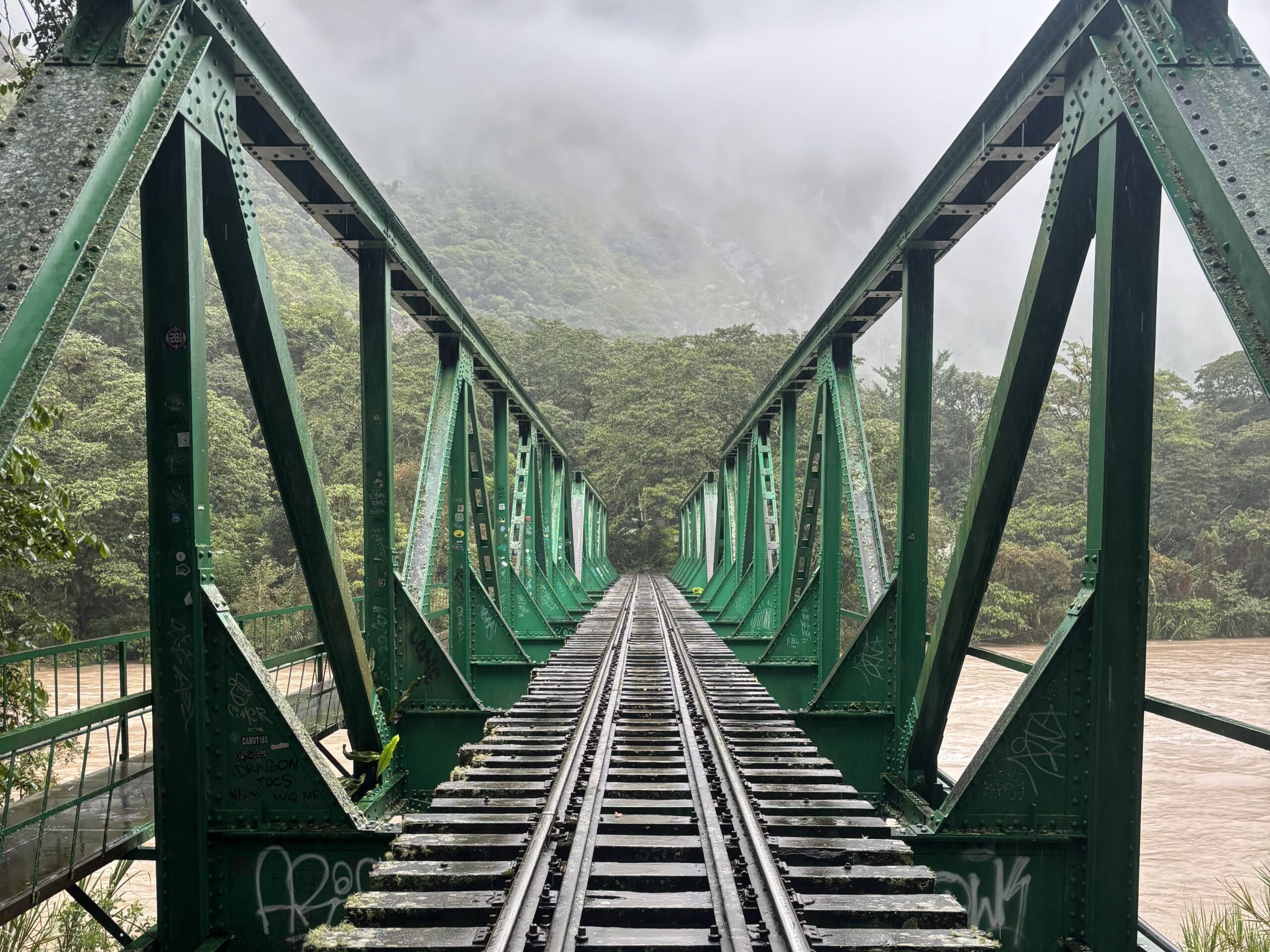
One moment that really stood out was crossing a massive, sketchy bridge hanging over that angry river. Xavier spotted the narrow walkway to the left. Me? I didn’t. I ended up tiptoeing across the slick wooden boards, soaked through, every step sounding like a creaky warning. One slip and I’d be river food. It was honestly one of the scariest things on the whole trip.
Eventually, after stomping along the rails in our soggy socks, we made it. Aguas Calientes rose out of the mist like some mystical checkpoint. I didn’t exactly marvel at it. I mostly just stared in exhausted gratitude that we’d arrived… and that we’d somehow done the walk in an hour and 25 minutes. Go us.
Even better—we got our Circuit 2 tickets. Victory lap moment. The rest of the day? A blur of drying off, lying down, and letting adrenaline slowly evacuate my body. That 10K speed walk through the jungle absolutely took it out of me.
DAY 5: A Foggy Machu Picchu
Another morning, another round of pouring rain. Classic. At least this time we were walkingup to Machu Picchu. Hooray… I guess. Now, you’d think that after four days of trekking we might catch a break, but no—there’s one final decision to make: pay for the bus up, or take the stairs. Naturally, our cheap asses chose the stairs. And for a moment, I was genuinely confused why anyonewouldn’t. Then we started walking.
We’d been at altitude doing back-breaking hikes for months, but I don’t think a single section broke me like this staircase. Machu Picchu sits at a relatively chill 2,400 metres, but those steps? They were a vertical death sentence. Forty-five minutes of non-stop, straight-up climbing. No switchbacks. Just pain. My legs were this close to giving up on life. But like all things, it eventually ended—and we made it.
Fog. Fucking fog. We hiked over 50 kilometres through mountains, jungle, relentless rain, across actualmudslides—all for Machu Picchu to be completely hidden behind a wall of mist. I’ve never felt so instantly betrayed.
But then, slowly, it began to clear. Bit by bit, the fog lifted—like we were unlocking a video game map in real life. First, the iconic terraces. Then the peaks in the background. And finally, the full city came into view—and it hit. Machu Picchu ismajestic. Walking through it is like walking into a time machine. From rock beds to gazing at their version of a school. It’s ancient, intricate, and humbling. While you’re there, it’s impossible not to realize just how far people have gone— from the Incas to the tourists—to reach this place.�
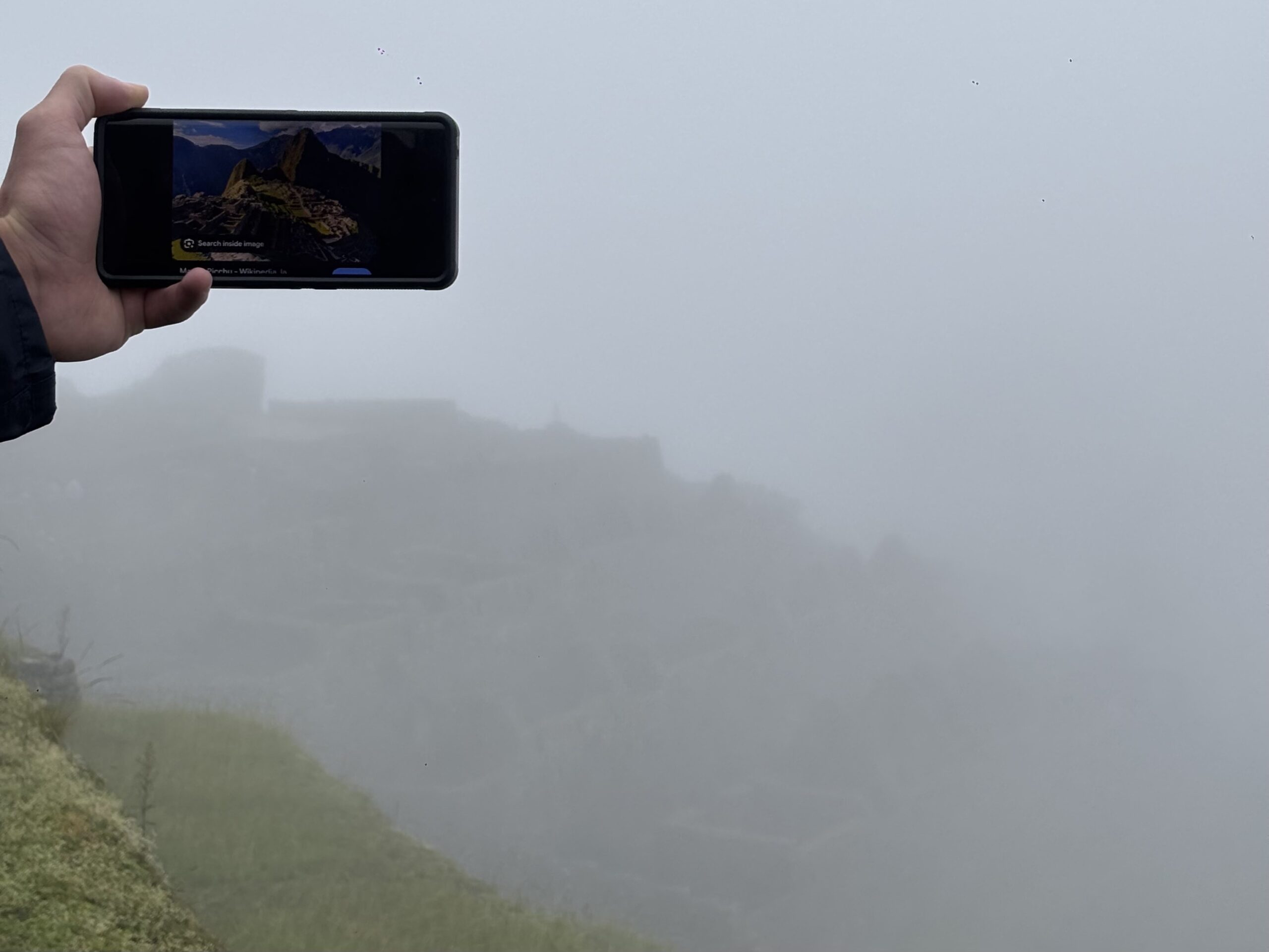
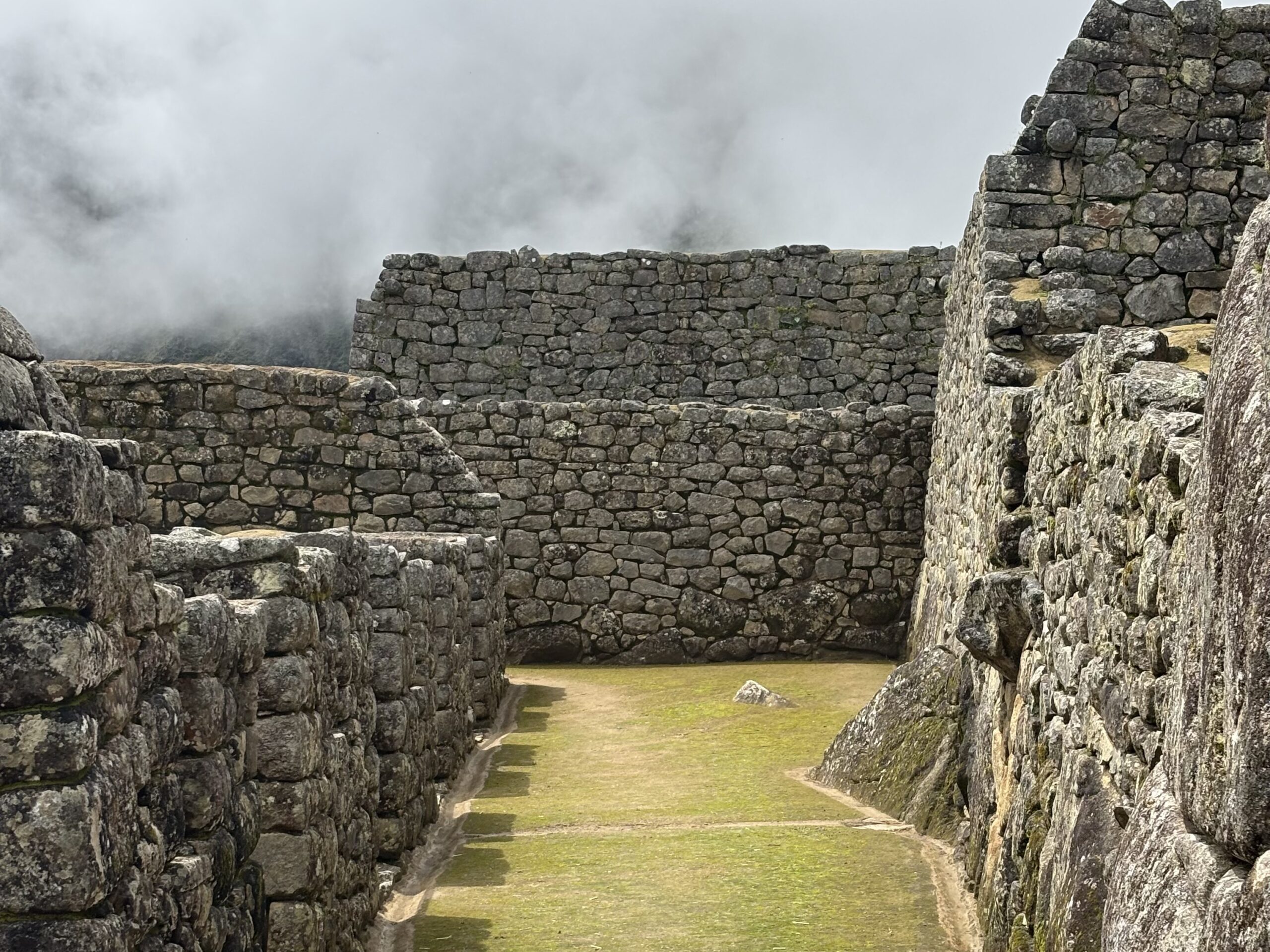
To have actually made it, after everything… the altitude, the rain, waking up at 4 to 6 everyday, the full leg cramps… yeah, it was all worth it.�